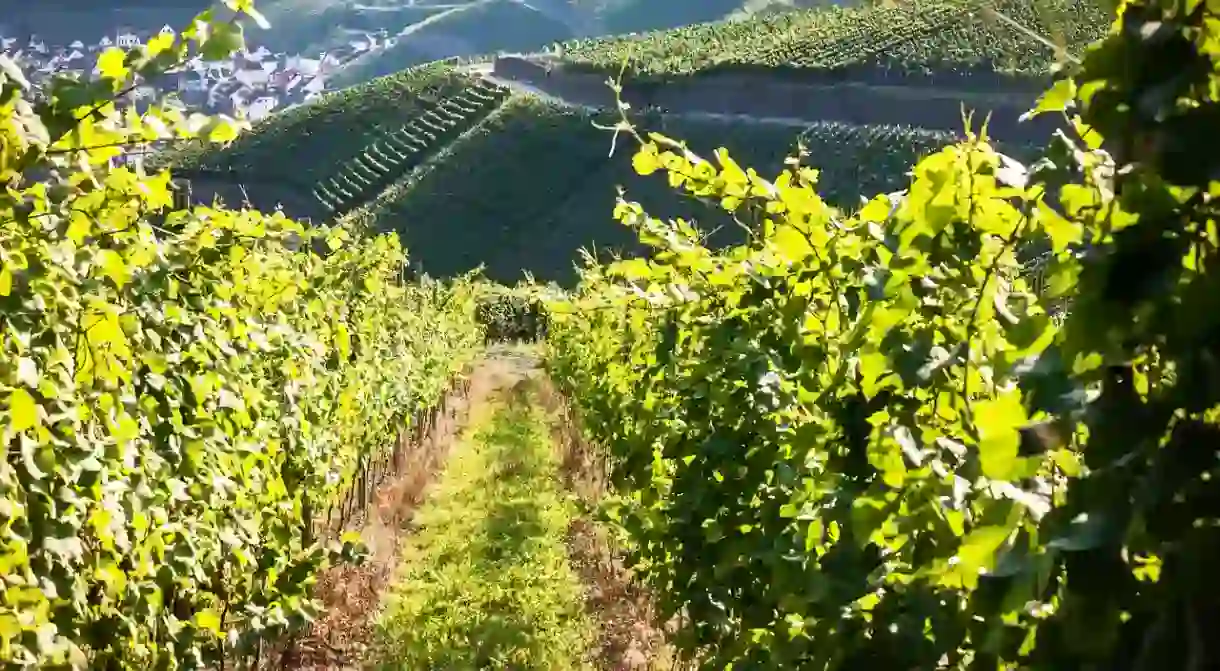The Ultimate Guide To Cava, Spanish Sparkling Wine

In the world of sparkling wine, French ‘Champagne,’ is the only variety in the world legally permitted to use that nomenclature, and is seen as the benchmark of quality. However, the Spanish version known as Cava, has long been considered a delicacy in Spain and is beginning to make waves on the international stage, as more and more connoisseurs are recognising its richness and complexity. Read on to find out everything you need to know about the most festive of Spanish wines.
The history of Cava production in Spain
The history of Cava production in Spain owes a lot to the early 19th century research of one man, Luis Justo Villanueva. Aware of the French production of sparkling wine using the ‘méthode champenoise‘, he introduced this practice to the Catalan agricultural department and sought to promote it amongst local wine-producers. The production method remained the same but using the indigenous varieties of grape which grew in the Penèdes region of Catalonia, such as macabeu or xarel·lo. The first of these to agree to experiment with the method were two producers from the area of Reus, Francesc Gil and Domènec Soberano, who presented their achievements at the 1868 Universal Exposition in Paris.
From then onwards, the production of sparkling wine continued to spread across the region of Catalonia, at a time when vine growing was the largest agricultural activity in the area. In the mid-19th century, Spanish wine production largely benefited from an unexpected phylloxera epidemic which wrecked havoc in France, destroying many of France’s vine plants and creating a shortage of European wine. This small pest feeds on the roots of the vines, causing debilitating deformation and eventually rot and death of the vine. This period of time was one of general prosperity for Spanish wine producers, especially those located just across the French border in Catalonia, as they experienced an unprecedented surge in demand. This allowed Spanish Cava to make a name for itself throughout Europe and consolidate production at home once and for all. However, it wasn’t until 1972 that the name ‘Cava’ was given for referring to Spanish sparkling wines, in distinction to their French equivalents.

The many different types of Cava
Although it is legal for Cava to be produced in parts of Spain outside of Catalonia, the vast majority of Cava is produced within this north-eastern province of Spain. There are a total of 159 municipalities in which Cava production is authorised, including in parts of the provinces of Barcelona, La Rioja and Valencia. There are three indigenous varieties of grape which are the most commonly used today to produce Cava: xarel·lo, macabeu and parellada.
The first thing to know when choosing a Cava is that it can be both white or rosé, depending on the type of grape used and how the wine is produced. Both are traditionally made in the area, although the white variety is the most common. The next thing to look out for is the type of Cava, classified from Brut Nature to Dolç depending on the levels of sugar in the final product. These denominations exist in the same way for French Champagne, although the latter is usually more acidic than Cava. As a result, the driest versions Brut Nature and Extra Brut tend to not be produced in France, whereas in Spain they tend to be the most popular.
The term Brut Nature refers to the fact that the wine is ‘naturally’ sweet, with no sugar being added during the fermentation process. With all other types of Cava, sugar is added in the final stages of the production in the form of what is known as the licor d’expedició, a mixture of white wine and sugar, introduced just before the bottle is corked.

The Traditonal Method of Cava production
Importantly, in order to officially qualify as Cava, the sparkling wine must be produced according to what is known as the ‘traditional method,’ the equivalent of the French méthode champenoise. This is a rigorous and sophisticated method of double fermentation which relies on naturally occurring gases to give the wine its fizz. As a result, it is considered the superior method of production and a benchmark of quality in the world of sparkling wines. During the first fermentation process, a mixture of grapes, yeast and sugar create alcohol. When this mixture is filtered, it results in what is commonly known as wine.
From then, a second fermentation process is required in order to give the wine its effervescence. The wine is placed in bottles along with yeast and sugar, which provokes the creation of carbon dioxide inside the bottle, and left to rest for a minimum of nine months. The final stages of production involves filtering the remnants of yeast from the bottle and if needed, adding the licor d’expedició (which adjusts the level of sweetness) before sealing the bottle once and for all.
The level of technical skill and rigour required to make Cava in this method, along with the quality of the vines in the region and the increasing complexity of the resulting wines, all contribute to the growing popularity of Cava across the world. No longer considered a second-rate competitor to its French rival, Cava has made a name for itself as a quality wine to be taken seriously.














